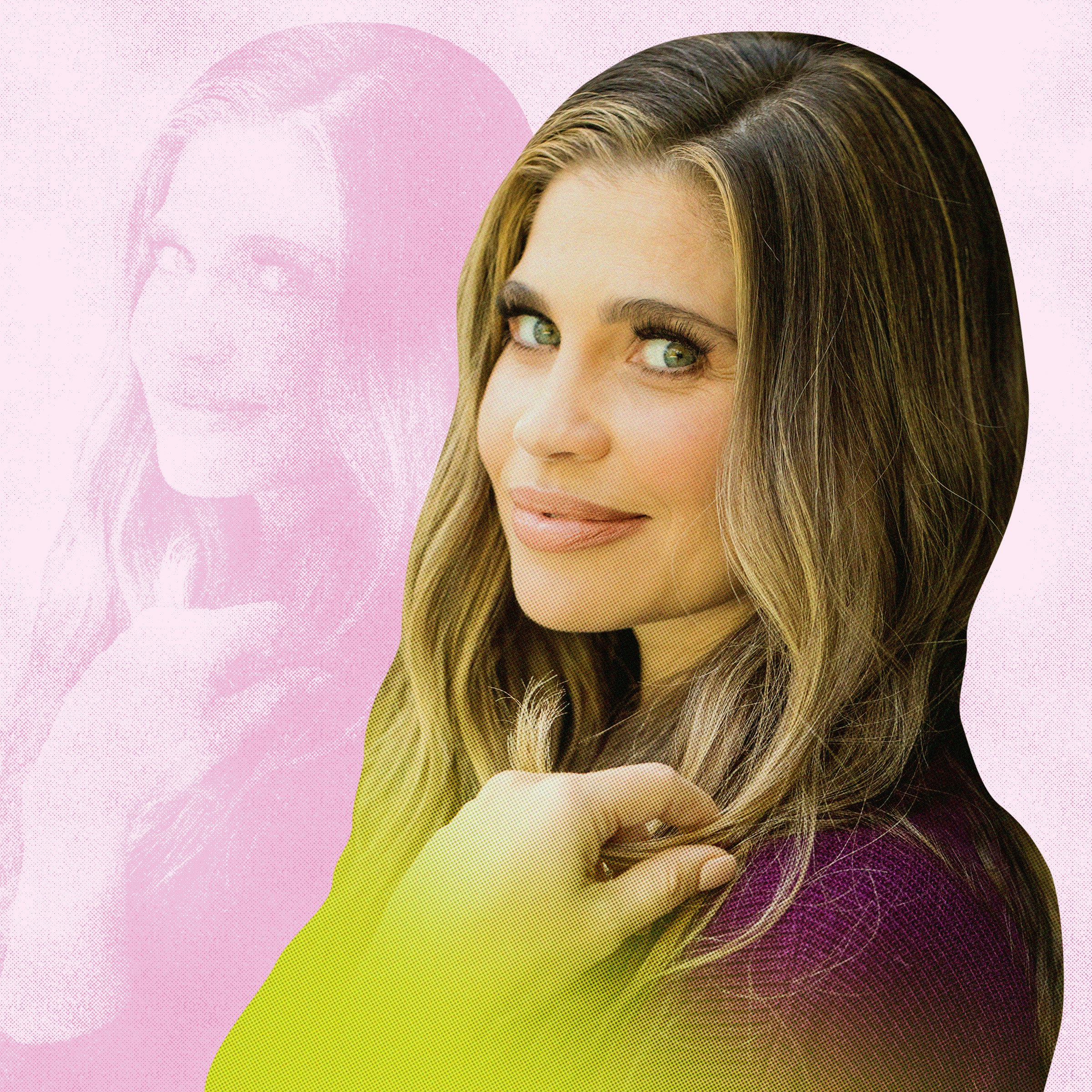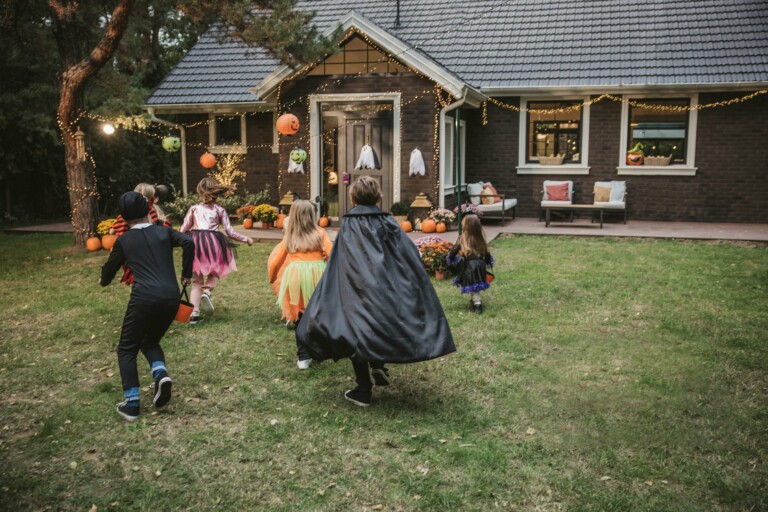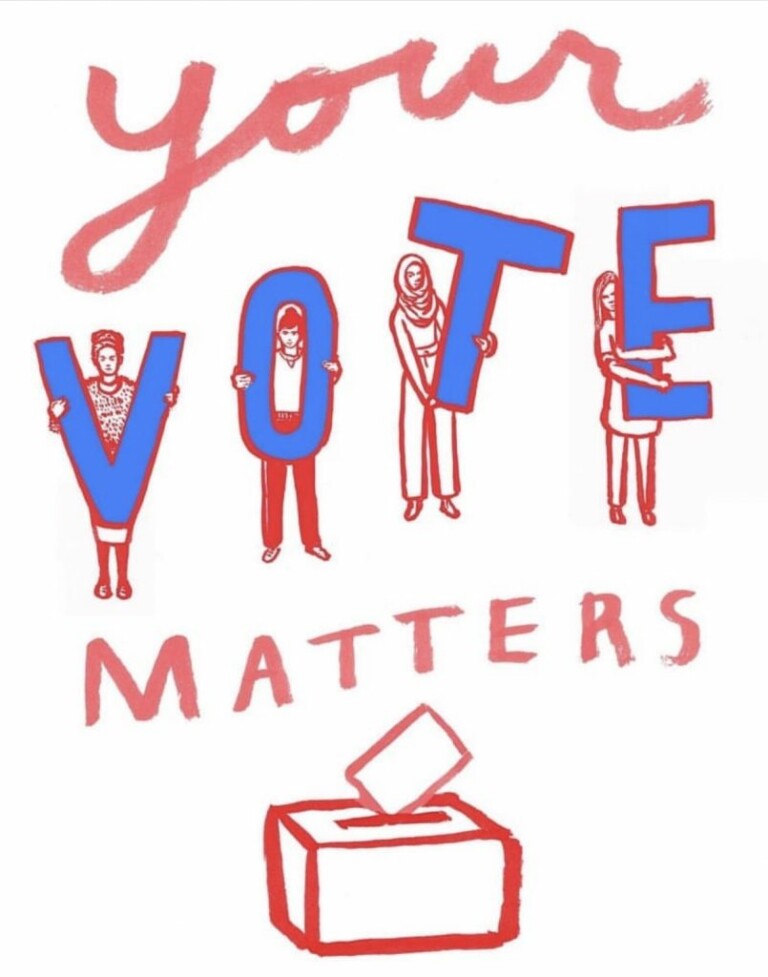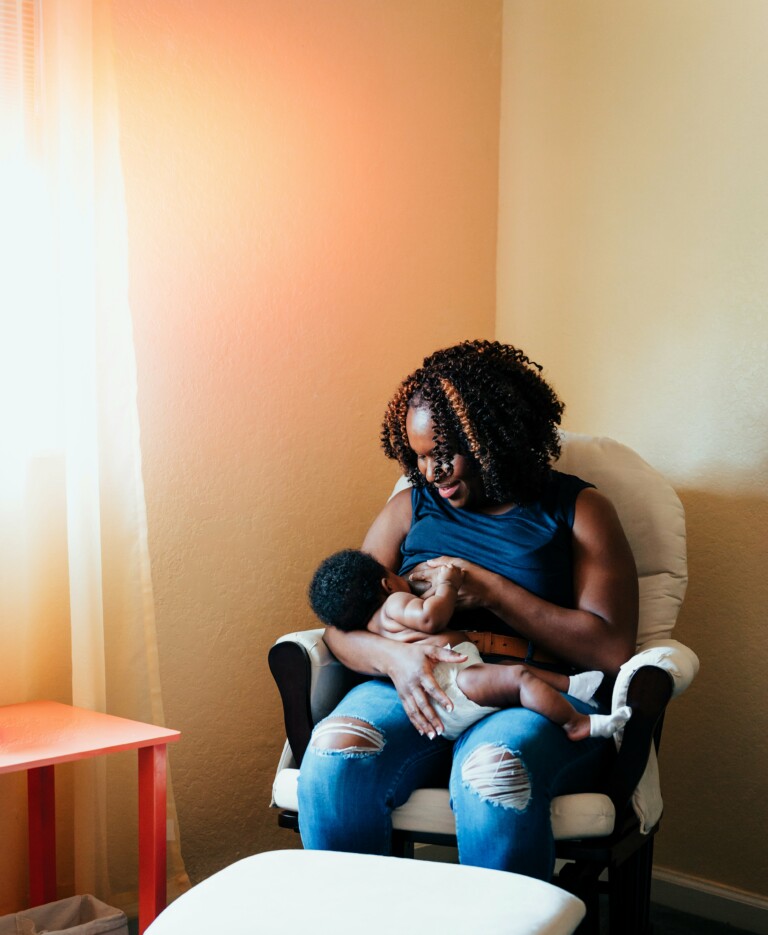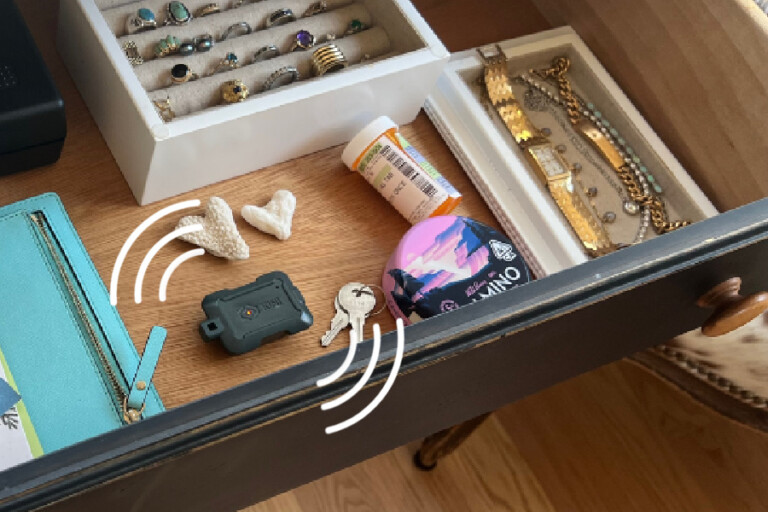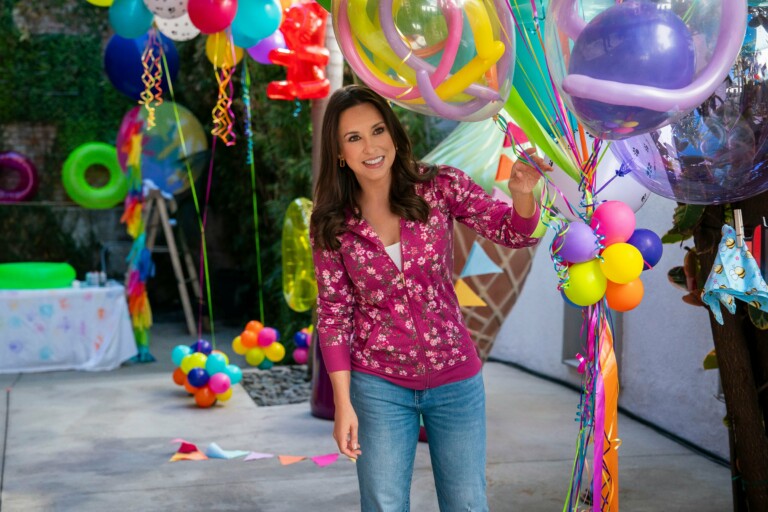Iskra Lawrence Talks Body Image & Acceptance In The Age Of Ozempic
Even if you don’t know Iskra Lawrence, you know Iskra Lawrence. For starters, she’s the founder of Saltair, a brand you’ve undoubtedly seen all over your FYP. But also, she probably pinged on your radar back in 2016 when, after refusing to be Photoshopped, she became Aerie’s first Role Model. She starred in an un-retouched campaign with the brand that generated a lot of very thoughtful (and necessary) discourse about the bodies we inhabit and filter culture.
In addition to building her massive online brand, the model-turned-entrepreneur has also built a reputation for being one of the most empowering voices online when it comes to body acceptance and inclusivity. The impassioned advocate isn’t afraid to be vulnerable with her community — five million and counting on Instagram alone — about her own struggles with body dysmorphia and disordered eating. She knows that body acceptance isn’t linear, and in sharing her story, she hopes to meet people wherever they are in their own journey.
In that tenor, Lawrence is especially excited to host The BodCon 2024 on Sunday, Nov. 3. Designed to inspire confidence in every body and every journey, the highly anticipated virtual conference will feature panels and discussions on navigating dating in the digital age (Reesa Teesa, the viral sensation of TikTok’s “Who TF Did I Marry?” fame, will chat with Lawrence), the state of inclusivity in fashion, the clash between body positivity and the Ozempic craze, and more.
Scary Mommy caught up with Lawrence to talk about BodCon, being a newly minted mom of two, and why there’s so much to unpack when it comes to body image right now.
SM: I really appreciate that BodCon isn’t some vanity con — the community partner is the National Eating Disorders Association, and it features a diverse group of proven thought leaders. What does that mean to you?
IL: The number of times I’ve been asked to be on a panel claiming to be about diversity, and then when I ask to see the other panelists, I’m like, ‘We’re all white, and I’m the largest one there.’ No, that’s not OK. BodCon understands it’s part of the core and the DNA of their mission. Everyone’s aligned. Everyone knows what this is about and feels included, and that’s just really special.
I’ve done many panels, especially more business-sided ones where people are essentially getting time to tout their next product or promote their new book. This conference is not about that. It’s genuinely people wanting to share something in the hopes of helping the other person on the other end, wherever they might be. And that’s what’s so cool about a virtual conference — it enables people from anywhere to access that information and feel part of that conversation.
SM: I feel like we’re at such a tricky place when it comes to body image because the conversation surrounding weight has really reached a fever pitch with the rise of GLP-1 drugs. How are you drowning out that noise?
IL: I’ve definitely even been talking to my partner about this a lot — just how it felt like we were fighting and pushing forward for so many years, and there was so much progress. It felt like this community, and everyone felt like we were taking care of ourselves. Then it took this turn of masking, taking care of and glowing up, and all these things into thinness.
Obviously, I think a lot of us weren’t even aware that Ozempic was kind of happening. There were leaders in the space who maybe struggled to be open with what that journey looked like, and I think we’ve all just gotten a bit confused and felt left out in the dark.
There’s just a generalization of this thinness being back — the ‘90s trends on the rise the last couple of years, certainly in fashion. From my perspective, being in this industry, nearly every single plus-size model I’ve spoken to is not working or working a lot less. Brands have cut back on plus size and extended sizes, and it’s like, ‘Whoa, how did this rug just get pulled out from under us?’ It’s really frustrating.
It’s concerning because I think a lot of people don’t know the long-term damage of this. I think a lot of people are thinking, ‘Oh, it’s an opportunity to talk about lifestyle changes and shifts,’ but I think where the pressure has come from and why that has become so important is what we need to break down. Is it because of the pressure of society and just the overwhelming subconscious messaging that we are seeing at the moment of these glow-ups, which are just masquerading toxic diet culture and thinness? Or is it because we are learning more about how to take care of ourselves and people are feeling motivated to move more or change their lifestyle in a positive way?
SM: It’s really tough to wade through all of this and decipher what’s healthy and what’s real and what’s toxic while also not comparing other people’s journeys to our own.
IL: That’s what’s so personal, and it’s something that you really have to tap into and understand. I certainly have felt at times triggered thinking, ‘Oh my gosh, look at all these people, my peers’ — and I’m pregnant at the time too — ‘Is everyone all of a sudden finding extra hours in the day to walk all these steps? Are they really changing their lifestyle and nutrition in a different way? Or is it Ozempic? Or are people now focused on their body more because of Ozempic or because of fashion changing?’
I want to hear other people’s perspectives about how they’re navigating things online and how they feel when they see someone that maybe they looked up to … it’s a lot to unpack.
SM: Absolutely. Even with pitches I’ve been getting this year from PR reps, I’ve noticed that the sizing is far less inclusive.
IL: I really do think it’s just that plus-sized bodies and extended sizes are not people’s priority. Even when they tried to make it seem diverse by including more sizes in their campaigns, that was just front-facing. The actual boardrooms, the actual tables where decisions are made, they aren’t size inclusive. And there’s just this lack of people who can actually be a voice and advocate for people like them in positions of power.
SM: Well, congrats on your very new little girl, who just made a cameo! You had another home birth… how did that experience compare to your first?
IL: The first one, I just didn’t know. I think that that’s the hardest thing about childbirth and the newborn stage and being a mom — no one teaches you what to do or how to do it, and there is no perfect way or rule book. With this birth, because I had that insight into what I loved about my last birth and what I would change or improve, I went into it with more of an intention of knowing what to expect. I know how to breathe through these contractions. I know what they’re going to feel like. I was just able to really enjoy it and lean into it and be in it, rather than questioning every second, like, Is this right? Is this what’s meant to be happening? This is really painful; is it meant to be this painful?
I also have a new birth team. It was tricky because [my first birth] was during COVID. So, with my previous midwife, with the mask on, it just felt a little bit disconnected in that sense, whereas my new birth team felt like my best friends. It felt like we were doing it together, and I felt very supported. I felt like no question was too silly, and I could ask them anything. With that support came this sense of calmness, and that going into the birth changed all of the energy.
SM: Was it relatively smooth sailing?
IL: What’s really interesting is my midwife said that a lot of the time, what happens in your first birth — anything that’s traumatic, potentially — can stick in the physical, and it can happen in your second birth, too. I told her that was my fear: My son’s shoulders got stuck, and then he came out and his head got stuck. His neck was in my cervix … I had to get out of the birthing pool quickly, and I wanted to be in the pool for all of the birth. My midwife pulled him out, and he didn’t breathe for, well, it was split seconds, but it still felt like, Oh, was that traumatic? Is that normal? And apparently, it is normal, but the whole thing just felt a little bit scary.
In the second birth, she did actually get stuck when she was crowning, but the way my team handled it and I handled it this time was completely different. No one panicked. Everyone knew that if I could keep my oxytocin high, she would come out in that next contraction. So I got to stay in the bath, and there was no stressful ‘Get out of the bath; she’s stuck!’ That was just amazing. So, it did feel like a redemption birth in that sense; even though it was incredibly painful, it felt weirdly peaceful and exactly how I wanted it to go.
I think because of all of that, too, the healing was easier. I didn’t have any questions about sleep, and the breastfeeding was going so well that I was able to sleep better after … I wish more people got that opportunity to really have the birth that they want.
SM: What have you noticed has changed about your body this go-round, and how do you tune out any static about snapping back?
IL: I definitely love that people call it ‘snap forward.’ I think that that’s a great way to look at it, because your body is not the same. It’s like you get a second version of yourself, and that can be scary. You’ve got to have time to get to know it. I love the idea of your body being the house, but you have to make it a home — and sometimes, the home needs some redecoration.
So, I’ve been trying to celebrate my body. I felt frustrated during the end of my pregnancy. The last month I was walking with a cane. I had pelvic girdle pain and SI [sacroiliac] pain, which is something I never experienced. Weirdly, I never even heard of anyone having it. As soon as I opened up about it online, I got floods of comments and DMs saying, ‘Oh, I had that too.’ And I’m like, how do we not know this about our bodies? It’s just mind-boggling to me.
But because of that frustration I felt, I was worried if that was going to impact the birth … I’m just now in awe because as soon as my baby came down, the pain was gone. Whatever was going on with my pelvis, it moved. I’m just at this point where, again, I use gratitude as my greatest tool: If my body managed to do this miraculous thing, how can I not celebrate it?
SM: How do you reframe the moments when you feel less celebratory, or do you?
IL: Of course I’m going to look at my body and think, ‘Oh, it’s a lot softer. Oh, these abs still separate. Are they ever going to come together? Am I ever going to feel as strong?’ Maybe I’ll choose to want to go that route. Or maybe I’ll choose to just be really grateful and comfortable that my body did what it did and needed to do to have my babies, and enjoy that.
I think — well, hopefully — life is more abundant in time than I think we give ourselves grace for. We just expect things to happen so quickly. I want to lead with grace and be thankful for my body, and if I find the time to make it a priority to move more and get strong again, that’s something I’m interested in. But I don’t want it to come before my babies, especially now I know how quickly that time goes. I look at my 4-year-old, and I try not to cry every day because I’m like, ‘You’re so big.’ I know you know that feeling.
It just doesn’t need your attention and pressure over these little humans that are so precious, and that time with them is the most important thing to me. So, I just am getting on with it. I’m looking at my body, and I think a lot of it is body neutrality rather than sometimes self-love in the sense of, yeah, there are mornings where I’m like, ‘Oh, don’t look my best.’ And I will confidently say that. Would I like to do my hair? Absolutely. Would I like to wear something cuter? Great, but I’m going to be covered up in spit-up.
I’m just really trying to be present with my baby while she’s this small. I know that’s where I want to invest my time and energy and attention.
Tickets for The BodCon, which takes place this Sunday, Nov. 3, from 12-5:45 p.m. EST, are available here (general admission tickets are free!).
This interview has been edited for length and clarity.
Information contained on this page is provided by an independent third-party content provider. This website makes no warranties or representations in connection therewith. If you are affiliated with this page and would like it removed please contact editor @saratogasprings.business
